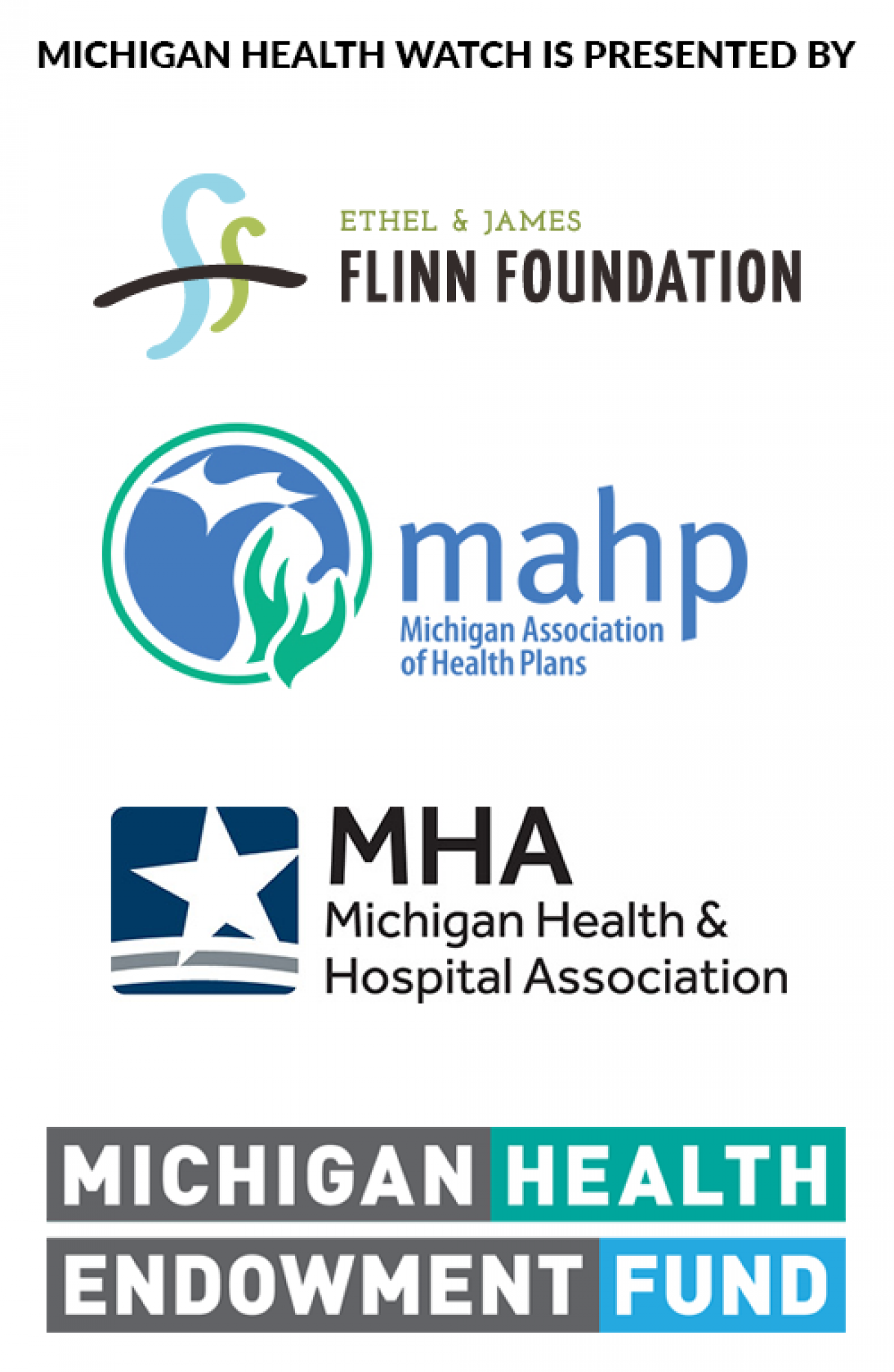U-M study finds surprising abusers of opioids: new mothers. The fix is easy.

Even as the opioid crisis ravaged the nation, more than 1 in 100 women who were prescribed powerful painkillers for childbirth had become persistent users just months after baby arrived, according to new research by the University of Michigan.
It’s a grim statistic in a nation reeling from the epidemic, especially since many of the 3.8 million women who give birth each year can manage their pain with non-narcotic medications such as ibuprofen, said Dr. Alex Friedman Peahl, a University of Michigan obstetrician and health services researcher and lead author of the study that examined nine years ending in 2016.
The findings also may help guide the medical community as it tries to standardize procedures for clinicians who both want to help patients manage pain without fueling America’s deadly addiction, which killed 2,729 people in Michigan in 2017.
In fact, it may have been the clinicians’ commitment to their patients that drove much of the persistent drug use, according to Peahl.
Doctors may write prescriptions leading up to delivery, giving new moms one less thing to do in the chaotic, exhausting days after the baby’s arrival. But the study found that moms who were given prescriptions just prior to childbirth were more likely to ask for refills.
- Related: Michigan doctors not trained to treat opioid abuse -‒ and don't want to be
- Related: Opinion | Treating stigma to prevent opioid overdose deaths
- Related: Suicides, often linked to opioids, spike in rural Michigan and among young
- Video: Dealing with pain
“I suspect … prescribers do it to make women’s lives a bit easier,” Peahl said. “The problem is that prevents providers the discussion after delivery” to assess the woman’s pain and her ability to manage it with alternatives like Tylenol or Motrin.
Without that conversation, a new mother in pain with pills at-the-ready is less likely to consider the addictive nature of opioids before reaching for them.
“I’m speculating, but [the moms may think] ‘These pills are here. A doctor gave them to me. I should use them.’” Peahl said.
In 2017, research by the U.S. Centers for Disease Control and Prevention concluded that each day a patient uses opioids for acute pain increase their likelihood of becoming a chronic user beginning as early as the third day.
Additionally, moms who were given the highest number of pills also were more likely than others to become persistent users, as were moms younger than 20 and moms with psychiatric diagnoses, a history of substance use, and other pain conditions.

The study
The study, “Rates of New Persistent Opioid Use After Vaginal or Cesarean Birth Among US Women,” was published Friday in the medical journal, JAMA Network Open, and it calls for “judicious” prescribing and “preoperative risk screening.”
Peahl teamed with other members of the U-M Institute for Healthcare Policy and Innovation and with members of the Michigan Opioid Prescribing and Engagement Network, or Michigan OPEN, for the research. They used data of women who were privately insured and who filled prescriptions for opioids -- about 27 percent of women who delivered vaginally and nearly 76 percent of women who delivered by C-section. The research excluded women who suffered major birth complications or had other procedures in the year after birth.
The remaining 308,226 women became the study group, which was 51 percent white with a median age of 31.3 years.
Overall, 1.7 percent of the women who delivered vaginally, or 893 women, and 2.2 percent of the women who delivered by C-section, or 2,633 women, refilled the prescriptions at least twice -- once within three months of delivering and again up to a year after delivering.
But precisely what is driving these refills in unclear.
“These women should be fully recovered from a C-section and definitely from vaginal delivery, at the six-week mark,” Peahl said. “That’s when we see them in the office. We can’t say they meet the definition of misuse at that point, but we want to know them better. We don’t know if they’ve taken [the pills]. We don’t know why they are refilling them, where they are getting them, and who is prescribing them.
“What we do know is this is outside of what we’d expect at six weeks,” she said, adding that researchers are currently interviewing women to find out more.
The number might be artificially low, too.
The U-M study didn’t include women on Medicaid or women who were uninsured, for example. A recent review of cases of women in Tennessee concluded that opioids were prescribed much more often -- 53 percent for women who delivered vaginally and 89 percent by women who delivered by C-sections while covered by Medicaid. Plus, the U-M study was limited to women who hadn’t been prescribed opioids the year before childbirth.
In other words, it may be that the women in the U-M study -- “opioid naive” and covered by private insurance -- are “the lowest risk group,” Peahl said.
Still, even a few percentage points are far from insignificant. In 2017 alone, Michigan moms gave birth to 111,507 babies, according to the Michigan Department of Health and Human Services.
Researchers found some good news, too.
Prescription rates dropped slightly between 2008 and 2016 – from 26.9 percent to 23.8 percent for vaginal births and from 76 percent to 73 percent for C-section births.
Plus, the rate of persistent use had fallen by the end of the study. For this reason, researchers wanted to be conservative, concluding that that at least 1 in 100 women had become persistent users, Peahl sid.
And there was this good news: Those biggest predictors of persistent use were also the most “modifiable.” In other words, doctors can choose when to prescribe medications and in what quantity.
In the national data set, women often were getting 30 or more pills after C-sections. But guidelines from U-M’s OPEN team recommends that women receive no more than 20 five-milligram oxycodone tablets or the equivalent after a C-section, or even none at all. Meanwhile, doctors are educating patients on a new Enhanced Recovery After Surgery, which encourages patients to try alternatives to take the edge off pain before it peaks and they reach for opioids.
It’s part of a larger effort to educate doctors, patients - and even policy makers - that patients can better control their pain when they know what to expect beforehand, said Dr. Micheal Englesbe, a transplant surgeon and co-director at U-M’s OPEN. Ultimately, the work will lead to national standards of care for pain management.
“What we’ve learned is that dentists and surgeons and ER doctors can write for fewer pills and still provide best pain care,” he said.
“We now talk to patients about pain. It’s not something we did before. … Now we say ‘You’re going to have pain after surgery. That’s normal,’” he said. “When we set expectations, that’s 90 percent of the magic of opioid minimization.”
That’s true for new moms -- even with so much on their minds for the days leading up to and after childbirth, Peahl said. When doctors and patients talk collaboratively about pain expectations, risks and options, women are better able to manage their pain.
“I don’t feel like as a physician that I’m trading using less medication for good pain control,” Peahl said. “It’s actually allowing for better pain management so [the women] can enjoy the postpartum time with their family.”
See what new members are saying about why they donated to Bridge Michigan:
- “In order for this information to be accurate and unbiased it must be underwritten by its readers, not by special interests.” - Larry S.
- “Not many other media sources report on the topics Bridge does.” - Susan B.
- “Your journalism is outstanding and rare these days.” - Mark S.
If you want to ensure the future of nonpartisan, nonprofit Michigan journalism, please become a member today. You, too, will be asked why you donated and maybe we'll feature your quote next time!








